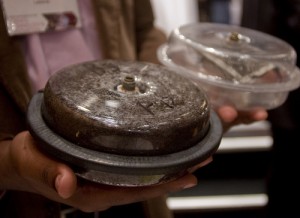In wake of the 9.0 magnitude earthquake and tsunami which struck Japan on March 11, there have been 6,911 deaths, 2,409 injured, and 10,692 people missing (Wikipedia, visited on March 18th 2011) as well as immense property damage. However, these figures will pale in comparison to the casualities that could result if Japan does not act now to prevent the looming disaster it is now facing. Due to the tsunami flooding backup power stations, six nuclear reactors of the Fukushima power plant had malfunctioning cooling systems, threatening a nuclear meltdown. Should the reactors leak out its radioactive fuel before they have cooled down, radiation levels in the atmosphere may become lethal to residents and possibly a global health threat.
The radiation leaking out of the reactors poses a health risk. The strong radiation emitted from nuclear reactions are able to ionize atoms by knocking electrons out of their orbitals. Nuclear radiation becomes a problem for humans if DNA molecules become ionized by this process. The molecular bonds in DNA may be destroyed either by direct ionization from radiation or by being disrupted by nearby ionized water molecules. The resulting mutations may cause cells to lose their function and die, or the cells may survive but lose their ability to control cell division, causing tumors. On Tuesday, the radiation inside the power plant had reached 400 millisieverts (mSv) per hour, which is many times past the 50 mSv annual limit for nuclear power plant workers. Exposure to high radiation increases the likelihood of cancer and if a person receives 1000 mSv within 24 hours, they may experience radiation sickness from the large number of cells dying. Residents within a 80km radius of the reactors have been evacutated for safety.
The crisis has been averted somewhat as some of the reactors have had electricity restored to their cooling systems, but reactor No.4 is still a candidate for potential meltdown. It is suspected that all the water in its cooling system had boiled away and entire wall from its cooling system has been destroyed, shown in the picture below:
Video for an explosion that occured at one of the reactors:

According to the news, radiation from the nuclear crisis in Japan should be reaching the West Coast at some time today, but it should be so diffuse by the time it reaches North America that it will have no health effects at all.
Resource for the effects of radiation:
http://www.hss.energy.gov/HealthSafety/ohre/roadmap/achre/intro_9_5.html







